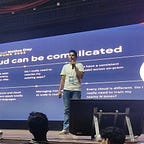Learn Kubernetes (K8s) from scratch
Learning Kubernetes (K8s) from scratch can seem daunting at first, but with the right approach, you can master it. Here are some tips to help you get started and progress in your Kubernetes learning journey:
Understand the basics: Begin by grasping the fundamental concepts of Kubernetes, such as containers, pods, deployments, services, and namespaces. Familiarize yourself with the terminology and the overall architecture.
Set up a local cluster: Install a local Kubernetes cluster on your machine using tools like Minikube or kind. This will allow you to experiment with Kubernetes without needing access to a production environment.
Official documentation and tutorials: Consult the official Kubernetes documentation, which is comprehensive and well-maintained. It covers a wide range of topics, including installation, configuration, and usage. Follow the step-by-step tutorials to gain hands-on experience.
Online courses and tutorials: Enroll in online courses or follow tutorials from reputable platforms such as Kubernetes.io, Udemy, or Pluralsight. These resources often provide structured learning paths and practical exercises.
Practice with sample projects: Work on sample projects to apply your knowledge and gain practical experience. You can find sample applications and exercises on GitHub or through online tutorials.
Join the Kubernetes community: Engage with the Kubernetes community by joining forums, mailing lists, and social media groups. Participate in discussions, ask questions, and learn from others’ experiences. #kubernetes
Deploy applications on Kubernetes: Once you have a good understanding of the basics, try deploying your own applications on Kubernetes. Start with simple deployments and gradually move towards more complex scenarios.
Explore Kubernetes ecosystem: Kubernetes has a vast ecosystem of tools and projects that complement its core functionality. Explore related technologies like Helm (for package management), Istio (for service mesh), Prometheus (for monitoring), and more. Understanding the broader ecosystem will enhance your knowledge and ability to build robust Kubernetes solutions.
Stay up-to-date: Kubernetes is a rapidly evolving technology, so it’s essential to stay updated with the latest releases, features, and best practices. Follow Kubernetes blogs, newsletters, and attend relevant webinars or conferences.
Contribute and teach others: Once you have gained proficiency in Kubernetes, consider contributing to the open-source projects or sharing your knowledge by writing blog posts or creating tutorials. Teaching others is an excellent way to solidify your understanding and become an active member of the Kubernetes community.
Remember, learning Kubernetes is a continuous process. Embrace the mindset of exploration, experimentation, and continuous learning as you progress.
Google offers a variety of tutorials and learning resources to help you master Kubernetes (K8s). I recommend referring to the following links for a fun and engaging learning experience:
- https://learnkubernetes.withgoogle.com/
- https://cloud.google.com/community/tutorials/gke-networking-fundamentals
- https://www.cloudskillsboost.google/course_templates/2
- https://cloud.google.com/kubernetes-engine/docs/concepts/kubernetes-engine-overview
Good luck!
#technology #work #community #learning #kubernetes #k8s #learnk8s #kube #helm #kubectl
